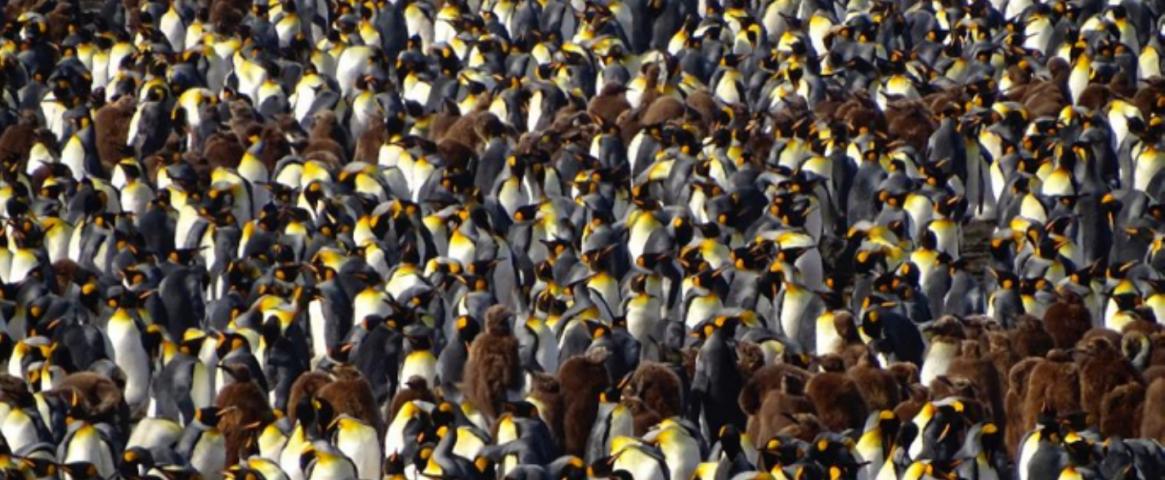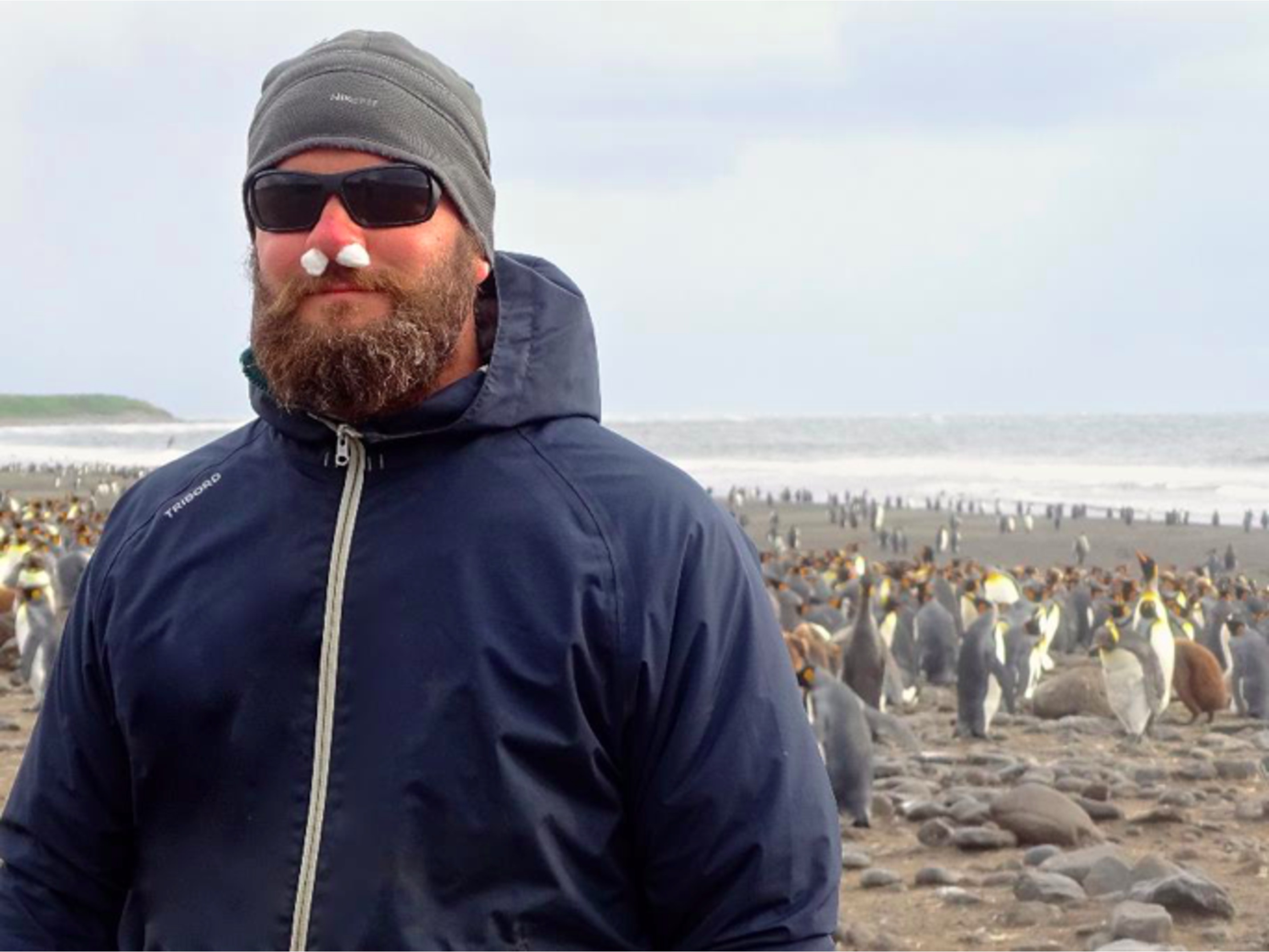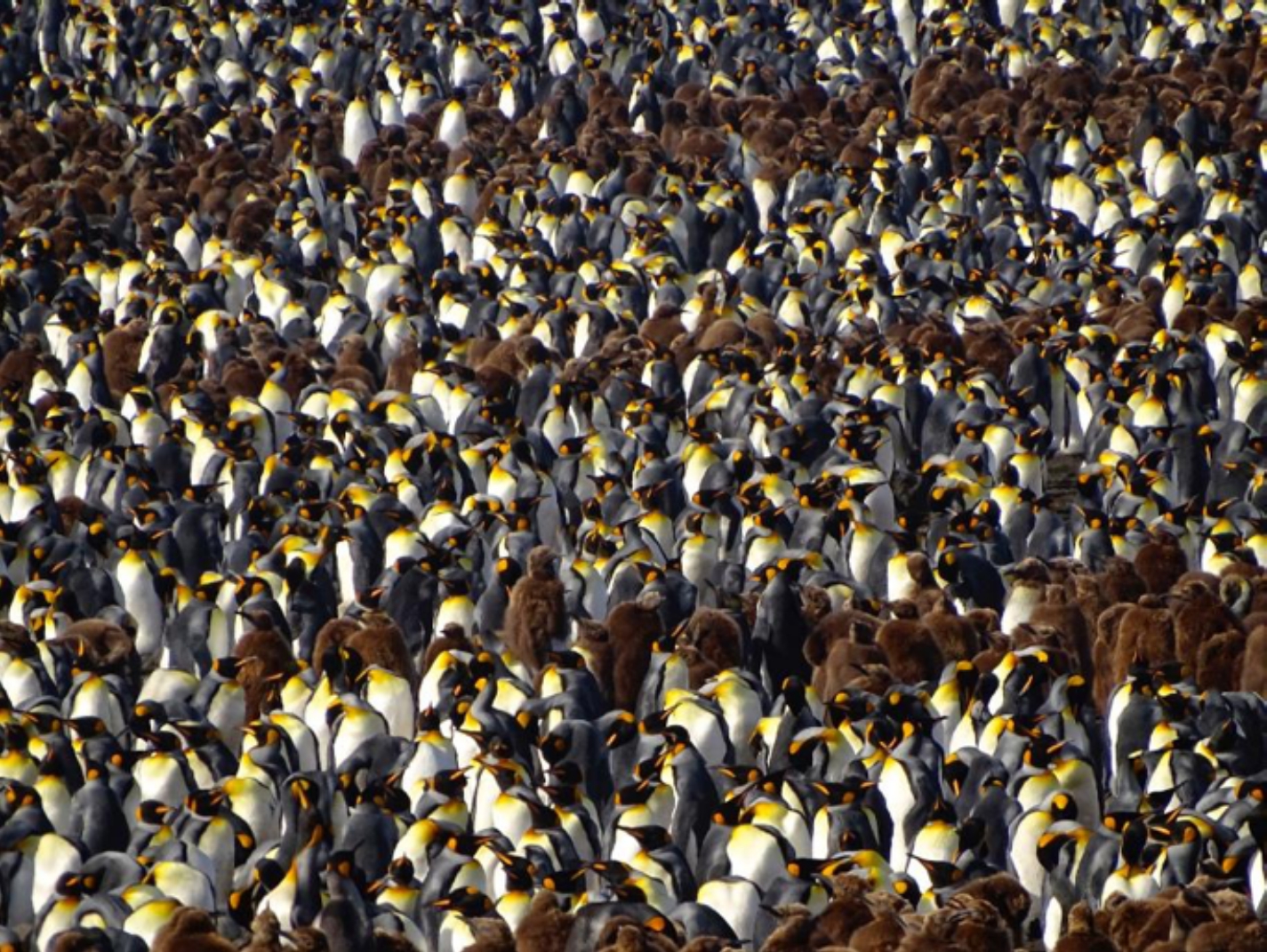By Adelle Reale
“Birds don’t have a sense of smell, and let's move on”. That’s what Greg Cunningham remembers his undergraduate ornithology professor telling him years ago. Fast forward, and Cunningham is waking up on the beaches of Africa and Antarctica, with thousands of penguins as his neighbors, proving his professor wrong.
Setting out to Robben Island, South Africa in 2008, Cunningham had originally gone to study interactions between sea birds and the fishing industry. Looking to maximize his opportunity there, he came up with an idea: determine whether or not African penguins could detect dimethyl sulphide (DMS), a phytoplankton produced compound that many marine animals use to locate their hunting grounds. This was deployed into the penguin walkways, where they would make their way to and from their homes after a long day of, well, being penguins.
Cunningham had another idea in mind- place penguins in a Y-maze with a trap door and let them decide! Working with the Southern African Foundation for the Conservation of Coastal Birds, Cunningham spent his days chasing around 31 captive penguins, picking them up, placing them within this maze, and allowing them to choose between either side, one containing a petri dish of DMS, the other containing water.
These experiments showed that African penguins can indeed detect DMS, slowing down on their makeshift runway in the evening, indicating they were more conscious of the DMS when they’re not in such a rush to get out and forage. As far as the maze goes, with only 3 penguins choosing the control side, it was further solidified that these penguins are indeed able to sniff out odors, specifically those used in foraging.
Until the ’90s, there wasn’t much information about how many species of birds were using their noses, including penguins. In 2000, Boris Culik and colleagues showed that Humboldt penguins may use their sense of smell, after satellite tracking them during the El Niño Southern Oscillation. However, Cunningham’s runways and mazes were the first experiments to clearly demonstrate that a penguin is able to detect an odor.
In further studies, Kyran Wright and colleagues found in 2011 that African penguins can detect DMS deployments in the water. Additionally, a 2013 study discovered that krill-eating Antarctic Chinstrap penguins also respond to DMS.
However, the African penguins weren’t enough for Cunningham. In 2015, working with French researcher Francesco Bonadonna, he set out to Kerguelen Island, in the sub-Antarctic to determine if another species of bird, the King penguin could detect odors that are associated with their own species.
After 2 days of flying, a 10-day boat ride and a 7-hour hike to the beach, Cunningham finally arrived at his cabin, where a tractor would occasionally come through to bring gifts of meat and cheese, and grown adults would sleep in bunk beds like young siblings forced to share a room. Although the very thought of sharing a bunk bed with a stranger in the middle of Antarctica may seem quite stressful, Cunningham noted that the “comradery that developed from being down there was super strong.”
Following 2 weeks of trying to get wild penguins to cooperate, Cunningham had an ingenious idea- just sneak up behind the penguins and stick a long pole underneath their beak. Easy, right? Wrong.
As simple and silly as it may sound, sneaking up behind penguins was a daunting task. Working on the penguin clad beaches of Antarctica, Cunningham would cover these sticks in either sand, molted feathers, or penguin feces, stick 2 cotton balls up his nose, close his eyes, mix the sticks around, and pick one at random. Then, he would sneak up behind them and place the stick under their beak. Cunningham recalls that saying that many penguins would wake up moments before he stuck a stick under their nose, or another penguin would call out, and suddenly, that penguin could no longer be counted.
Cunningham’s creative experiments yielded impressive results, discovering that King penguins had “significantly greater response to the feces and feather presentations compared with the sand”. This evidence suggested that these penguins may be acutely aware of the scent of their own kin, allowing them to recognize individuals by their smell, locate their colony from a distance, and orient themselves to groups within their colonies.
Armed with this knowledge, later researchers discovered even more about the penguin nose. In 2017, Marianne Gabirot and colleagues found that King penguins may use their ability to smell volatile organic compounds (VOCs) in their feathers to locate their colony and individuals. Cunningham’s research figures in a new work about olfactory cues and foraging behavior within groups of seabirds.
For now, we can all sleep better knowing that our beloved penguins are using their olfactory senses to survive and forage in the wild. They can probably sleep better too, without feces under their nose.
Adelle Reale is a recent 2020 graduate of St. John Fisher College in Rochester, NY. Majoring in Biology and minoring in English, Adelle enjoys combining her love for science with her affinity for writing. She is passionate about animal behavior and furthering the world’s understanding of how animals exist on our beautiful planet. She can be reached at adellereale@gmail.com.
This story was produced as part of NASW's David Perlman Summer Mentoring Program, which was launched in 2020 by our Education Committee. Reale was mentored by Tony Van Witsen.




